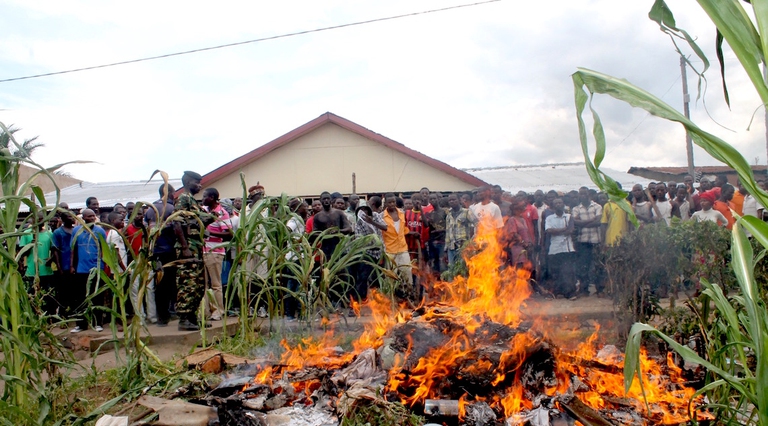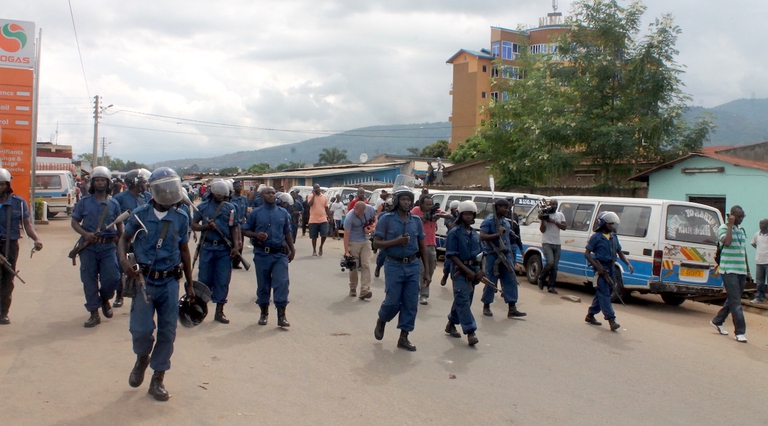
As per tradition after 12 years India held Mahakumbh, the world’s largest spiritual congregation that has been attracting pilgrims from across the globe.
A peace march in April 2015 called on Burundian citizens to show support for President Pierre Nkurunziza, who was planning to stand to be elected as president for the third time. The events that followed were unexpected and brutal. On the 19th of April many took to the streets of the country’s capital Bujumbura to
A peace march in April 2015 called on Burundian citizens to show support for President Pierre Nkurunziza, who was planning to stand to be elected as president for the third time. The events that followed were unexpected and brutal. On the 19th of April many took to the streets of the country’s capital Bujumbura to contest Nkurunziza’s decision to seek re-election, deeming it unconstitutional. Hundreds of political opponents and civilians were arrested.
The president’s party, the CNDD-FDD, officially announced on the 25th of that month that Nkurunziza would be running for president. Soon after the Constitution was amended to allow him to be elected for a third consecutive term. Four out of five judges of Burundi’s constitutional court signed the amendment, the fifth fleeing the country refusing to sign. Another was forced to sign under threat and the other three received financial compensation for their cooperation.
The protests escalate
Many took to Burundi’s streets in the following days. The radio was used to voice the grievances of the protesters, and political opponents sent letters to foreign governments and the United Nations. The police’s response was to shut private media outlets down and since then protests have been met with beatings, torture and imprisonment.
“Scared, many fled Burundi to seek refuge in neighbouring countries, mainly in Rwanda and Tanzania. Activities in Bujumbura came to a halt. 95% of the offices closed and people didn’t leave their houses,” says our source, who, having recently fled the country, wishes to remain anonymous for security reasons.
And turn violent
“Protests were becoming extremely violent. The police regularly fired tear-gas grenades. You could see dead bodies everywhere, many dead children too. Even the protesters themselves, who started with peaceful objectives in mind, started going crazy, throwing stones at the police to protect themselves. They even burnt a man to death,” says the journalist. “The more time went by, the more things went out of control. So what we would do was, and still is for those who remain there, block access to our neighbourhoods at night since that was when the police would come to our houses, shoot us or take us to jail. We decided the best option was to destroy roads to prevent cars from accessing our areas and light fires in the middle of our streets”.
Another protest took place on the 10th of May, led by women. Dressed in white, they took to the streets to ask for their husbands, sons and brothers to be set free. Men from all around the country joined the women’s second protest, which took place three days later.
The coup
A coup was announced that same day, the 13th of May, though it was soon denied by President Nkurunziza. Those who had celebrated the “coup” were arrested. Bujumbura remained quiet and many fled. By mid-June protests had ceased and by the end of July the president had been re-elected. Some of those who had left returned, mainly because they couldn’t afford living abroad.
An uneasy calm
“Today some neighbourhoods remain inaccessible. There’s a self-imposed 5pm curfew since we’re all scared to be out after that time. There are many new arrests every day, especially of the youth, for no valid reason. Private media is still non existent,” our source continues. “In the last weeks kids were supposed to return to school but since there are almost no teachers and few students many schools remain closed”.
“Burundi is at peace”
The government’s version of events is that there is no crisis in Burundi. Indeed, Nkurunziza often repeats, “99% of the country is at peace. There is only one group of people who creates disorder in a little part of the country”.
Yet others see things differently. “Honestly, in Bujumbura now, you see a policeman, you run. They are the ones who steal, kill, and torture,” says the Burundian journalist. With the way events have been unfolding and with no solution in sight, we may be looking at a war in the making.
Siamo anche su WhatsApp. Segui il canale ufficiale LifeGate per restare aggiornata, aggiornato sulle ultime notizie e sulle nostre attività.
![]()
Quest'opera è distribuita con Licenza Creative Commons Attribuzione - Non commerciale - Non opere derivate 4.0 Internazionale.
As per tradition after 12 years India held Mahakumbh, the world’s largest spiritual congregation that has been attracting pilgrims from across the globe.
Workers in tea gardens of West Bengal, India, that produces Ctc tea for domestic consumption complain that they have been devoid of basic facilities while political parties make hollow promises during every elections which are never fulfilled.
India is in the middle of the elections, but sadly none of the politicians have uttered a word on man-animal conflict that has been devouring several lives every year.
Manipur, a state in north-east India, is still reeling under the tremors of violence that broke out last year devouring lives and paralyzing the economy.
The government of Tanzania is currently planning to evict more than 80.000 indigenous Maasai people from their ancenstral land
A new UNU-INWEH report on the global bottled water industry reveals the massive scale of this market and the lack of strict quality controls.
Isatou Ceesay founded a social enterprise that is helping to fight plastic pollution and empowering women and young people to gain economic independence.
In 2020, Mihela Hladin made a radical decision that many, in recent times, have probably considered. This is her story, with photos by Matt Audiffret.
The Brazilian government has started evicting illegal gold miners, responsible for the health emergency that has hit the Yanomami people.









